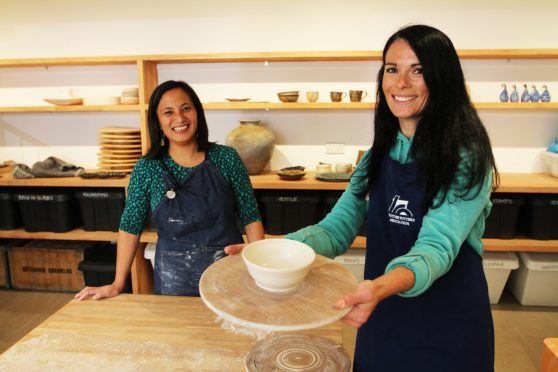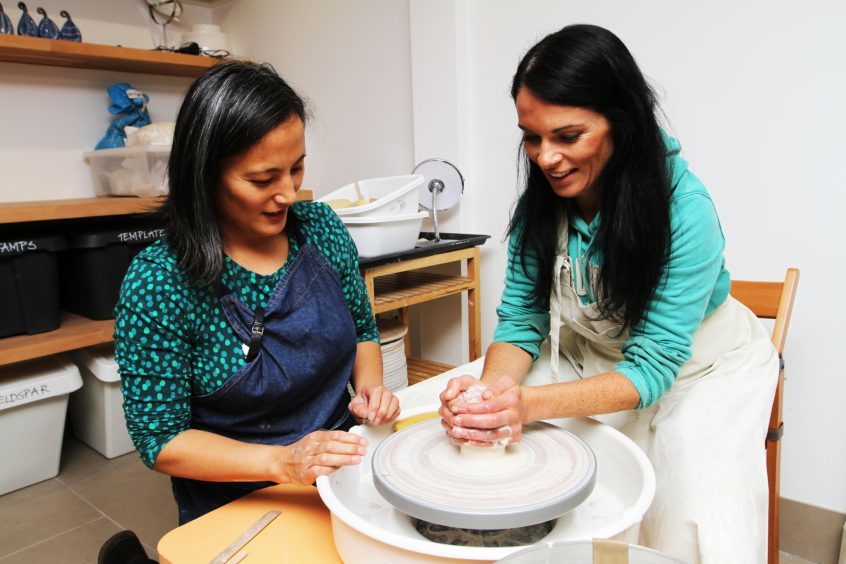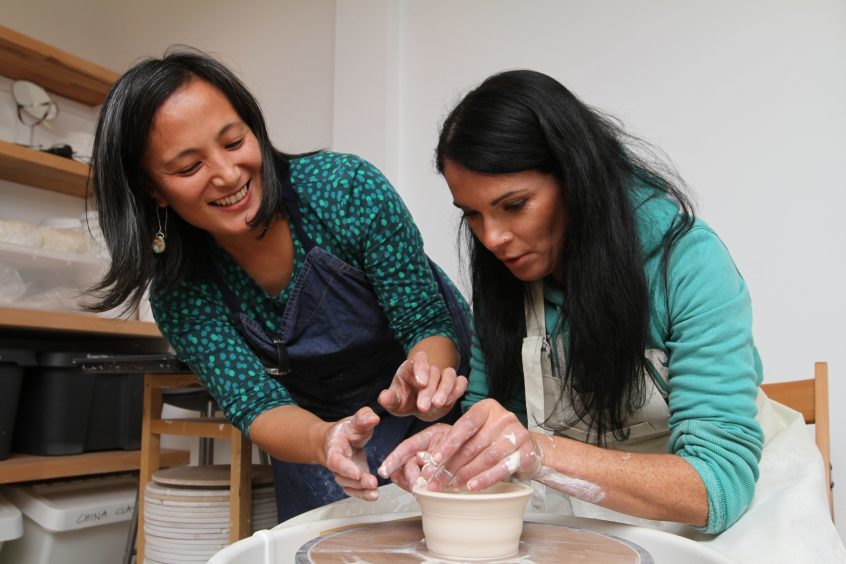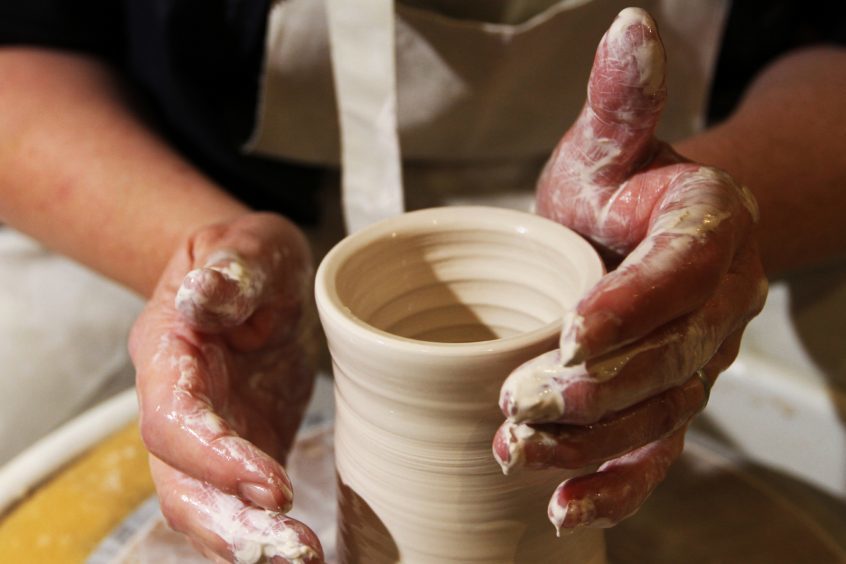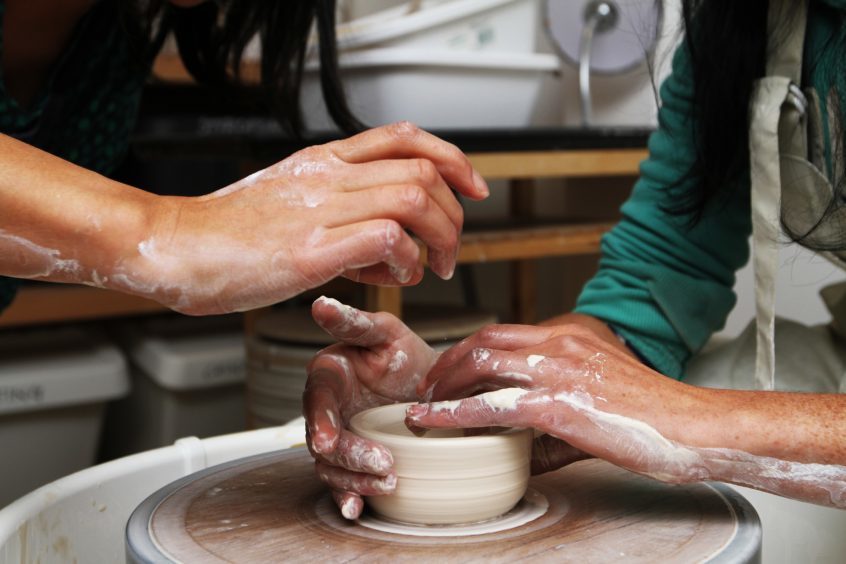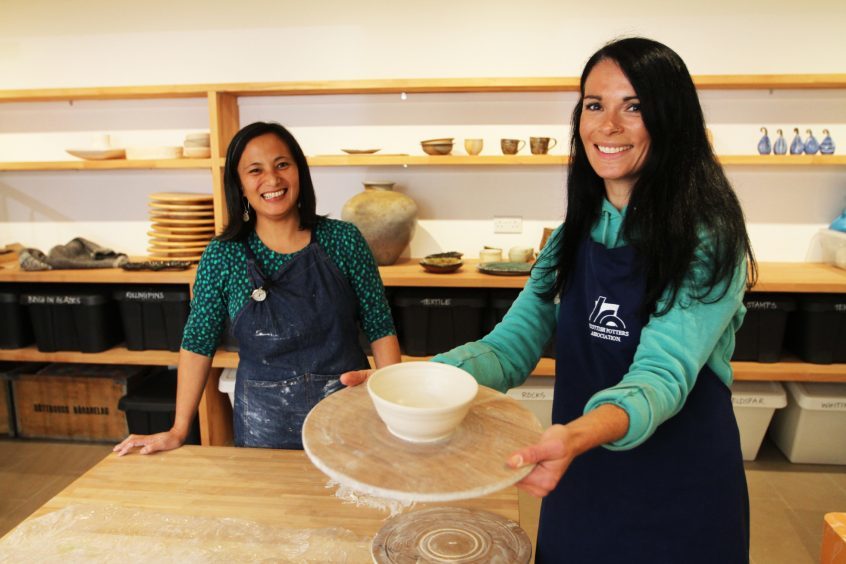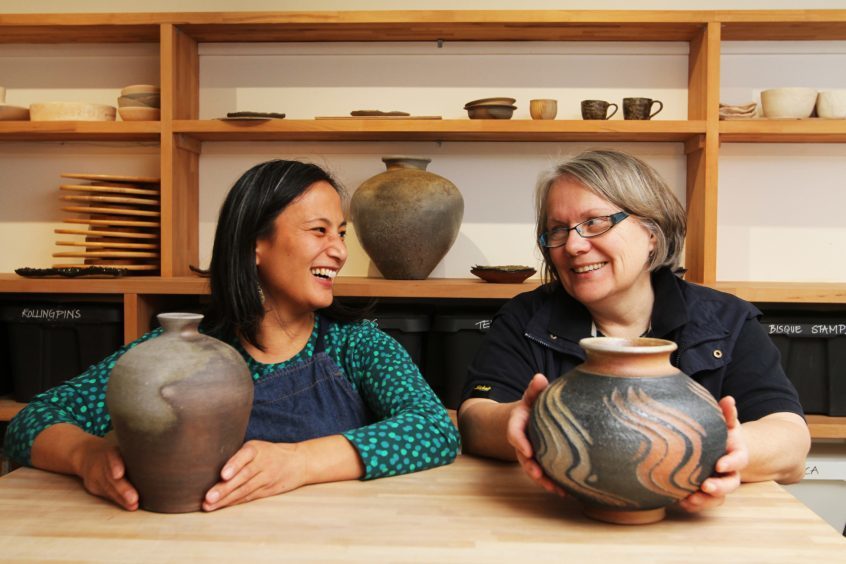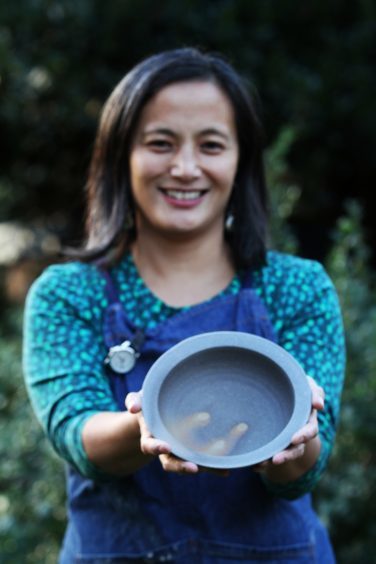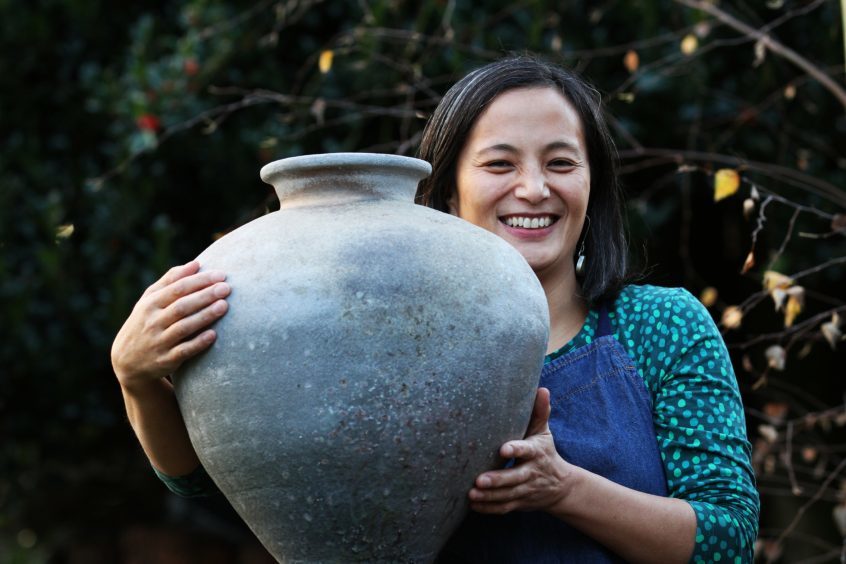Creative, therapeutic, inspiring and stress-busting – just some ways to describe the art of pottery. Gayle signs up for a workshop with two talented potters in Alyth…
Hunched over a pottery wheel with my hands covered in dripping wet clay, I’m feeling ever so slightly nervous.
So many things could go wrong if I lose concentration and as a total beginner, it’s a wee bit daunting.
Luckily I’m in expert hands, with local potters Nancy Fuller and Maria Nordgren here to help.
If the worst does happen, it’s not that bad, because all clay can be recycled, even when it’s dried out.
I’m spending the afternoon at Momentum Pottery in Alyth learning some basics about the art of “throwing” pots.
It’s a slow and intricate process – you throw the clay onto the wheel and shape it, wait for it to air dry, fire it in a kiln and then (if you want to) glaze it.
Because time is of the essence, Nancy shows me the first step – ensuring there are no air bubbles in the clay.
This is known as wedging and Nancy tells me the Japanese master who taught her made her practice this for an entire week…
Why is it so important? Air can make the clay explode in the kiln, which is definitely something you want to avoid.
Then you need to learn how to sit at the wheel; you want to be comfortable and your arms need to be well supported on the “splash pan”.
Using a foot pedal, you set the speed of the wheel and then, ensuring your hands are always wet and slippery, you start throwing clay with the aim of centring it.
You need to get a feel for the clay and know how much pressure you can safely apply.
Exert too much and the whole thing can be destroyed, as I soon discover.
“It comes with time,” says Nancy, reassuringly, as I tentatively cup the spinning clay between both hands.
“Just remember to keep your hands slippery when throwing and keep them steady. Don’t follow the clay; you need to control it.”
Things are looking good until, in a bid to bring the pot into a cone shape with the blades of my hand, I squeeze it too tight in the centre and the whole top section breaks away. Bah!
“It’s about conquering the clay,” Maria encourages.
“You need to collapse a few pots before you truly get the hang of it. Only then will you realise how far you can go; how much pressure you can use.
“When you start, you can be afraid, but just as you learn to roll a kayak, you need to collapse some pots. If it breaks you can try again.”
Back to my new pot and with Nancy sitting behind me Ghost-style, I feel like I might burst into song.
Unchained Melody by the Righteous Brothers seems fitting although Patrick Swayze is nowhere to be seen.
Once I’ve got a vague pot shape, the next step is to open up the centre and I do this using my two thumbs.
All goes smoothly until a weird nodule thing with a mind of its own forms at the base – and seems to be getting taller.
Luckily, Nancy is on hand to squash it down, and Hallelujah – my work of art is saved.
I then bring the sides up and finish the rim, using various fingers. I don’t think I breathe for fear of ruining it.
Once we reckon it’s ready – I’m more than happy with the shape – Nancy cuts the pot off the wheel head with a cutting wire.
My creation now needs to be air-dried and fired before I return to glaze it. I can’t wait. And who knows, someone special may end up with it in their Christmas stocking…
Certainly, vouchers for a pottery workshop with Nancy and Maria would make a fantastic gift.
Born in Taiwan, Nancy, 45, specialises in creating wood-fired pottery. All her work is fired in an anagama (a type of Japanese kiln) in Kemnay, Aberdeenshire, which she designed and built herself.
She’s inspired by her choice of clay and the Scottish landscape. “I don’t like bright and shiny; I like things to look old,” she says. “I’m inspired by stone and surfaces like granite.”
Maria makes unique, functional pottery; thrown or hand built in porcelain and stoneware.
info
Workshops take place at Momentum Pottery in Alyth, owned by Maria Nordgren.
Maria and Nancy offer bespoke packages including one-to-one lessons or group sessions.
